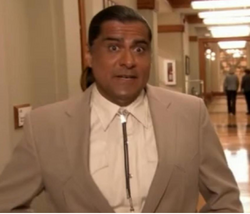
Disney movies are classic and timeless. We’ve all seen them and we’ve all grown to love them. These movies teaches children valuable life lessons, but they also them things like racial stereotypes. In the 1995 cartoon version of Pocahontas, a young, beautiful Indian princess with copper skin, long, black hair, and dark brown eyes encounters a brave and handsome “white man.” Everyone knows the rest of story: they fall into a forbidden love, their people fight each other, and the princess makes peace between the two sides at the very end.
The characters of Pocahontas is rooted in the "Indian princess" stereotype. In the film, English settlers were very attracted to Pocahontas, more so than the Native American men and since she was an “ Indian princess,” a term used by the men to legitimize Native American women, not many people opposed to the idea. She is strong and possesses an exotic sexuality that both emphasizes her "otherness," and yet serves as a forbidden fantasy for the dominating White male. The story of Pocahontas is mostly real. She wasn't a Princess in real life though. As a matter of fact, there were no Indian royalty and in turn there were no Indian Princesses. Yet these images and roles that is displayed on the screen continues to dominate the popular concept of who Pocahontas was. Another possibility as to why the "Princess Stereotype" emerged could be because she was exposed to the British Royalty after being captured by the English and everyone began thinking her as a Princess because her father was one of the head Native Americans of their tribe.
A possible theme in the movie appears to be good/bad Indian. Due to the portrayal of these stereotypes, children are being taught that “Indians” are bad people but some are exception to that rule, like Pocahontas. The movie also depicts Native Americans as aggressive while glorifying the image of the English settlers whom ultimately killed many Native Americans and deposed them of their land, something that was not shown in the Disney adaptation. Not only was the film incorrect in the portrayal of Pocahontas and the Native Americans, but they were also not fully correct when referring to Captain John Smith and his relationship with Pocahontas. However, it is very likely that Pocahontas and John Smith were never involved in a romantic relationship as Disney had portrayed in the animated film. Moreover, it appears that Pocahontas became an avenue between her people and the English settlers for negotiating goods and maintaining peace.
Even though these stereotypes were created many years ago, they still exist in modern films. They present a problem because many children are growing up thinking that all these false ideas about American Indian culture are true and viewers base their knowledge of Native Americans on these stereotypes. Also, Native Americans themselves may become confused about their own culture. These stereotypical representations are what shapes society’s views on one another. It justifies inequality. Native Americans being underrepresented in the media today. When they are being presented, they are stereotyped whether it is being wise elders, savages, mythical which gives the impression that they no longer exist.






